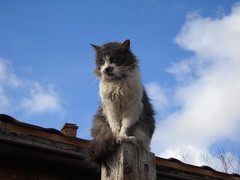The Story of Alexander Supertramp
In April 1992, Christopher McCandless arrives in a remote area of the Denali National Park and Preserve in Alaska and sets up a campsite in an abandoned bus. At first, McCandless is content with the isolation, the beauty of nature around, and the thrill of living off the land. He hunts wild animals with a .22 caliber rifle, reads books, and keeps a diary of his thoughts as he prepares for himself a new life in the wild.
Two years earlier in May 1990, McCandless graduates with high honors from Emory University in Atlanta, Georgia. Shortly afterwards, McCandless rejects his conventional life by destroying all of his credit cards and identification documents. He donates nearly his entire savings of $24,000 to Oxfam and sets out on a cross-country drive in his well-used, but reliable Datsun to experience life in the wilderness. However, McCandless does not tell his parents Walt and Billie McCandless nor his sister Carine what he is doing or where he is going, and refuses to keep in touch with them after his departure, leaving them to become increasingly anxious and eventually desperate.
At Lake Mead, Arizona, McCandless' automobile is caught in a flash flood causing him to abandon it and begin hitchhiking instead. He burns what remains of his dwindling cash supply and assumes a new name: "Alexander Supertramp." In Northern California, McCandless encounters a hippie couple named Jan Burres and Rainey. Rainey tells McCandless about his failing relationship with Jan, which McCandless would rekindle. By September, McCandless stops in Carthage, South Dakota to work for a contract harvesting company owned by Wayne Westerberg , but he is forced to leave after Westerberg is arrested for satellite piracy.
More on the film here, more on the book here.
Basically, it's impossible not to be fascinated with this story, for all its good and bad.
Labels: 19 August, Alexander Supertramp, Christopher McCandless, Into the Wild


